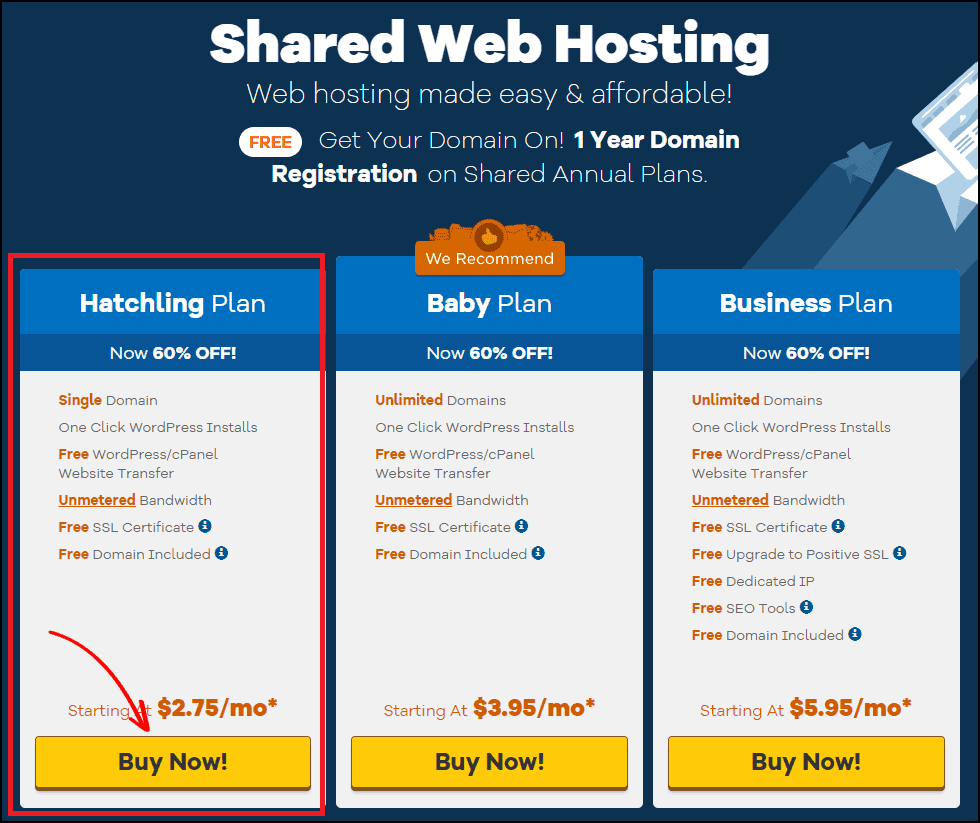How to Start a Blog with HostGator (2021 Guide)
Do you want to start a blog with HostGator?
Well, it’s super easy.
Having a blog, you can share your knowledge with the world, make an unlimited amount of money, market your business, and many more things you can do.
To create a blog on HostGator, you need to register a domain and purchase a web hosting plan.
There are many web hosting companies available that you can choose from. As you are creating your first website, I personally recommend HostGator hosting.
HostGator one of the best web hosting providers and now powering millions of websites.
Their hosting plans are super affordable, offer many hosting features, beginner-friendly, and most importantly, you can install WordPress on HostGator through cPanel with just a click.
In this tutorial, I will show you how to start a WordPress blog on HostGator.
But, why choose HostGator?
- HostGator’s hosting plans are affordable (as low as $2.75/ month)
- HostGator offers a FREE domain registration
- HostGator offers one-click WordPress installs
- HostGator offers FREE SSL certificate
- HostGator offers unlimited storage and bandwidth
- HostGator offers 24x7x365 customer support
- HostGator offers 45 days money-back guarantee
Ready to start a blog with HostGator? Let’s Go.
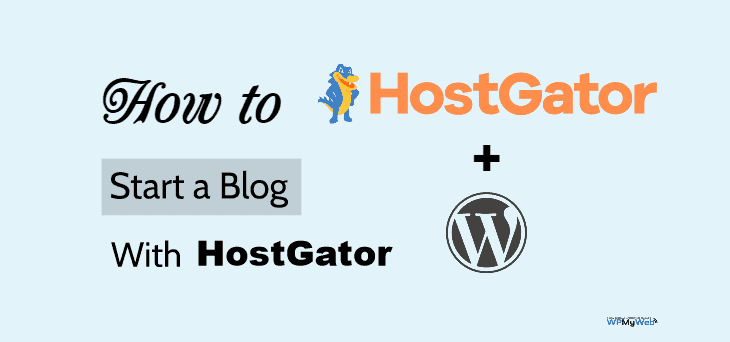
How to Start a Blog with HostGator Under 10 minutes
- Choose a Hosting Plan
- Register a Domain
- Purchase a Hosting Plan
- Install WordPress
- Setting Up Your WordPress Site
- Set Up an SSL
- Install WordPress Plugins
- Install a WordPress Theme
- Publish Your First Blog Post
There are two ways you can install WordPress on HostGator – Quick Install or manually.
However, I will show you the quickest process to install WordPress on your HostGator hosting. Usually, the Quick Install process takes around 10-15 minutes.
Let’s get started!
1. Choose a Hosting Plan
The first thing you need to choose a hosting plan based on your needs.
The good thing about HostGator is that it offers a variety of types of hosting, such as shared hosting, managed WordPress hosting, cloud hosting, VPS hosting, dedicated hosting, etc.
As you are just getting started, I recommend you to use shared hosting.
HostGator’s shared hosting plan starts from $2.75/ month which is quite affordable enough to start a WordPress blog.
HostGator also offers free WordPress site migration. So, if you are using xyz hosting and want to move your site to HostGator, then you can use the WordPress/ cPanel website transfer option.
Step 1, Visit HostGator’s Website
First, click here go to HostGator’s website. I have added a coupon in this link which will give you a 60% discount.
You can also enter the promo code WPMYWEB60 while filling up the payment details.
Step 2, Choose a shared hosting plan.
HostGator offers 3 different shared hosting plans, Hatchling, Baby, and Business.
- Hatchling Plan: Basically, this plan allows you to host one website.
- Baby Plan: With the baby plan, you can host an unlimited number of websites
- Business Plan: With the Business plan, you can host an unlimited number of websites. Plus, this plan includes some extra features like a free upgrade to positive SSL, free dedicated IP, free SEO tools.
If you are planning to host one website right now, go with the Hatchling Plan. Although, you can upgrade your current plan at any time.
Click on the Buy Now button to get started.
After that, you will be redirected to the domain registration page.
2. Register a Domain
A domain name is your website’s address on the internet. This is what people type on their web browser to access a website. For example, “Google.com”.
Usually, a domain costs around $10-$14 per year.
Luckily, HostGator offers a FREE domain registration with their hosting plan. I will show you how to register a free domain with HostGator.
Step 1, Choose a domain
From this page, you need to register your domain name. At first, enter your domain name and it will automatically check if the domain is available to register.
In case the domain you entered is already taken, try a new name.
Related Content,
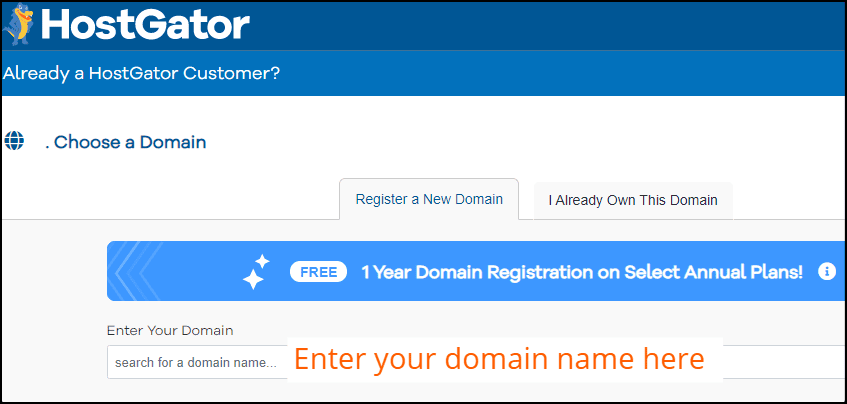
Step 2, Add domain privacy
Once you enter your domain name, it will show you the Domain Privacy Protection option. By default, it’s checked.
I highly recommend you to add Domain Privacy Protection.
However, it will cost you an extra $14.95, but it will save you from spammers.

Domain privacy basically hides all your contact information from domain lookup tools.
If you don’t have domain privacy activated, spammers will collect your name, phone number, email address and spam you all the time.
3. Purchase a Hosting Plan
In this step, you need to choose a hosting plan based on your requirements, billing cycle, and extra addons.
Step 1, Choose a hosting plan
From this section, you need to choose the Billing Cycle. You can choose your hosting’s billing cycle for 12 months or more.
I recommend you to choose 36 months package for the maximum discount.
Then enter a username and set a security PIN for your account.
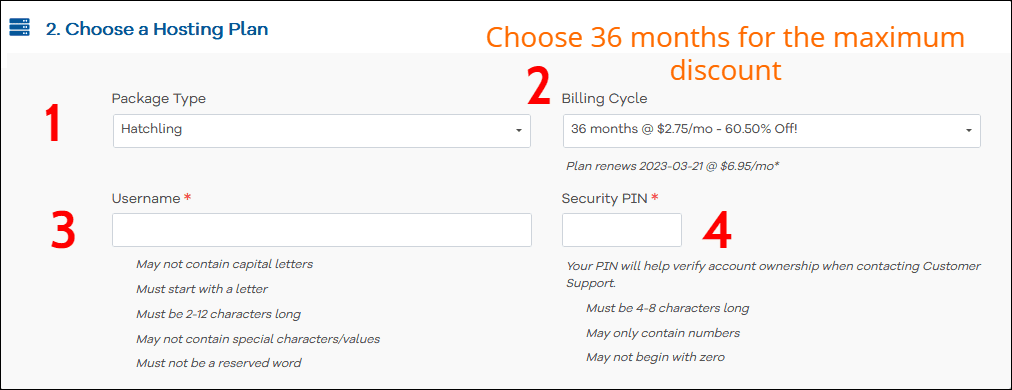
Now scroll below to fill up your billing info.
Step 2, Enter your billing info
Here, you need to enter your billing information, such as Email address, your name, phone number, etc.
On the right side, enter your payment info. You can pay using both Credit Card and PayPal.
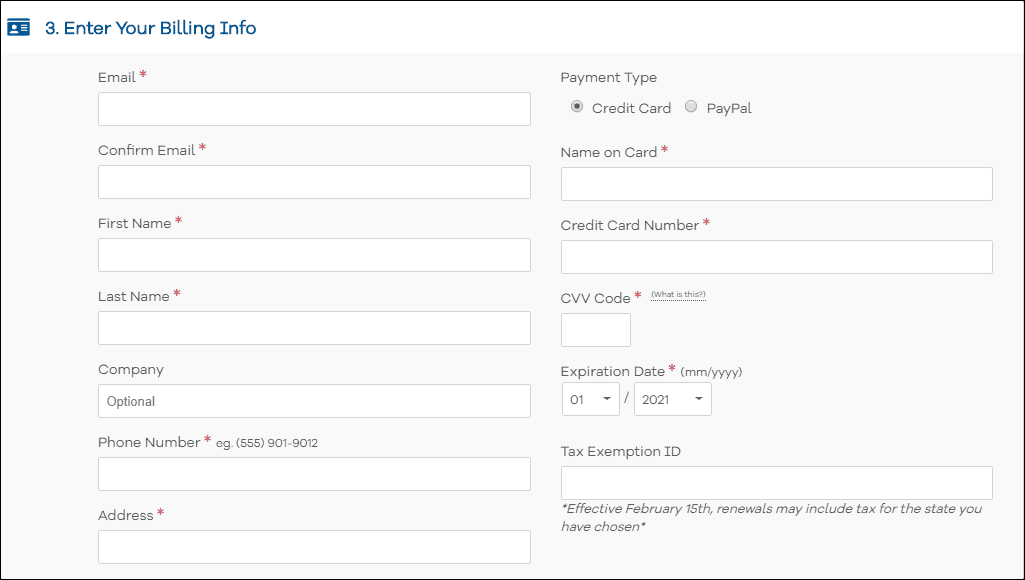
Step 3, Add Additional Services
You will be asked to add additional services such as SSL certificate, SiteLock Essentials, SiteBackup, HostGator SEO tools, but it’s totally optional.
I recommend turning them off.
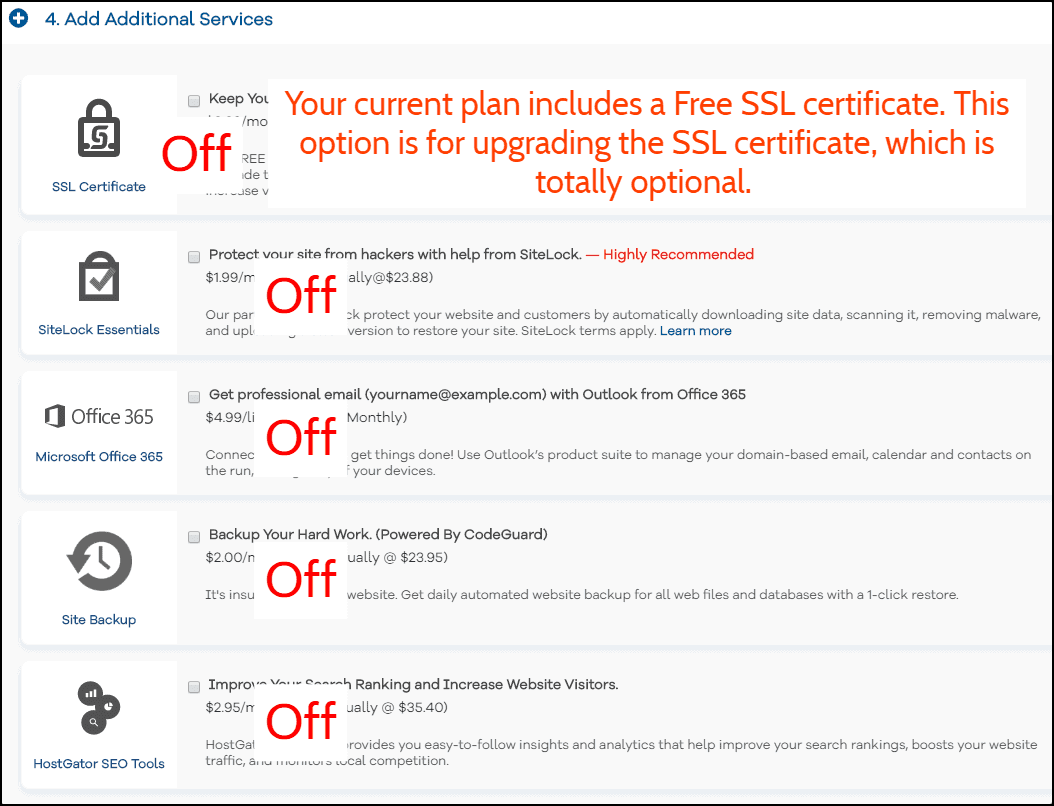
Step 4, Checkout now
Now check the “Terms of Service” box and click on the Checkout Now button.

Step 5,Check Your Email for cPanel Login Details
Once the payment is done, you will receive HostGator’s cPanel login details on your email.
There you will have your username and password for logging into HostGator’s cPanel.
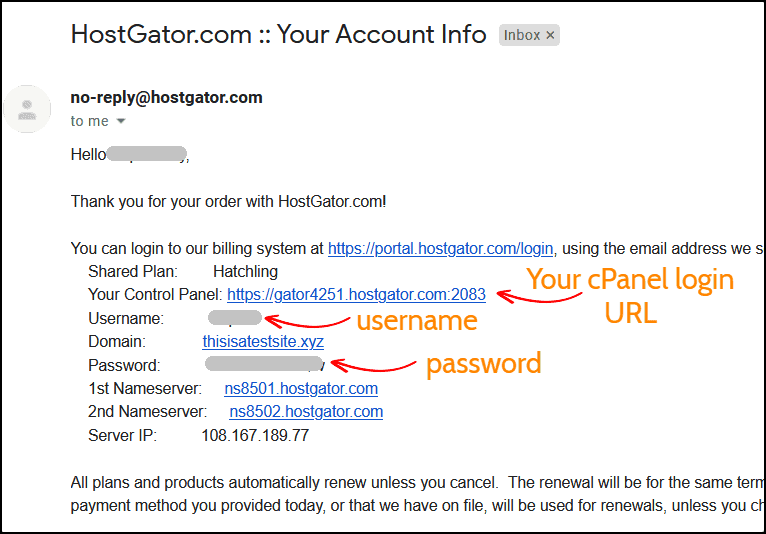
In the next step, I will show you how to install WordPress on HostGator.
4. Install WordPress
There are two ways you can install WordPress – Manual and Quick Install methods.
But here, I will show you the Quick Install process because it’s quick and easy.
Let’s install!
Step 1,Go to QuickInstall
Once logged in to your hosting cPanel, you will see many options.
Under the Software section, you will see a QuickInstall option. Click on it.
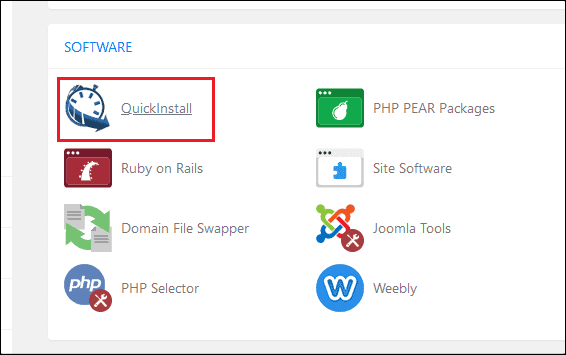
Step 2,Choose WordPress to Install
In that page, choose the WordPress software to install.
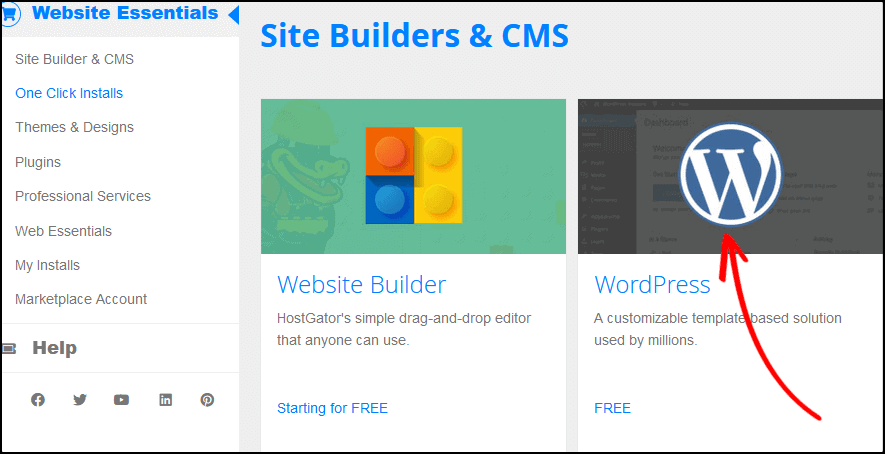
Step 3, Select domain for installation
First, click on the drop-down menu and select your domain you have just registered.
Leave the directory field blank and click on Next to start installing WordPress.

Step 4, Install settings
Before installing WordPress, you need to complete the setup process. Enter your blog title, admin user name, your name, and your email.
Once done, click on the Install button to start the process.
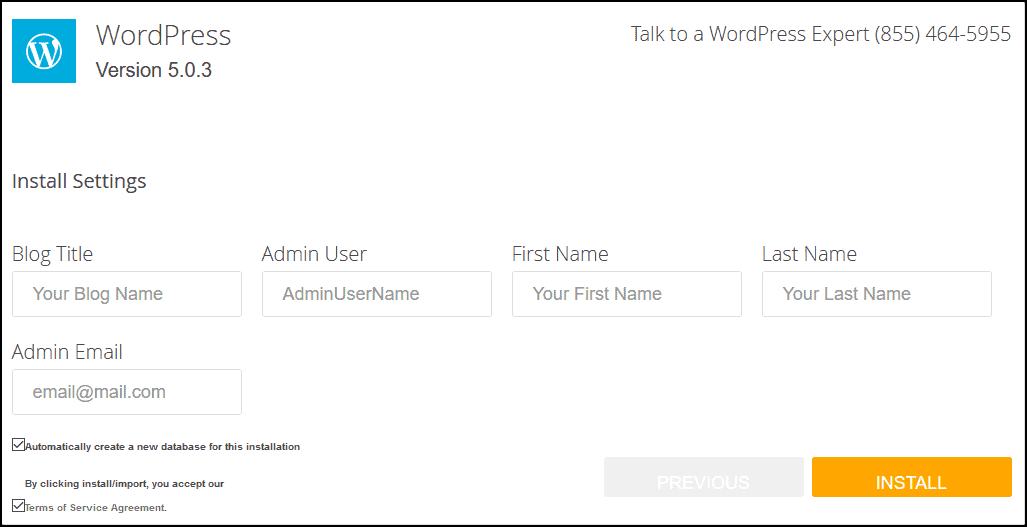
Step 5, Save Your Login Details
It will take a minute or so to complete the WordPress installation.
Once done, you will see your admin login details: username and password.
I highly recommend you save the username and password in a notepad file.
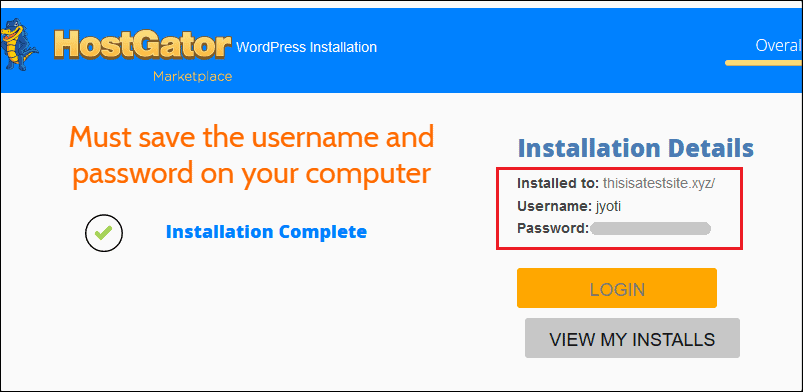
Now, you have successfully installed WordPress on HostGator. In the next step, I will help you to set up your website.
5. Setting Up Your WordPress Site
Once the installation process is finished, it’s time to set up your blog.
To get started, log in to your WordPress admin panel.
If you don’t know your admin login URL, simply add wp-admin at the last of your website’s name. For example, yoursite.com/wp-admin
Then enter your admin username and password to access your WordPress dashboard.
Step 1, Uninstall and delete the default plugins
The first thing after installing WordPress is to uninstall and delete the default plugins.
To delete a plugin, go to Plugins > Installed Plugins and scroll below to see your installed plugins.
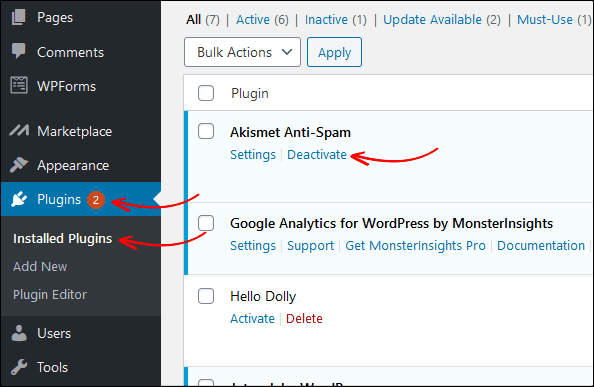
Then click on the Deactivate button and then delete the plugin. Similarly, deactivate and delete the other plugins too.
Step 2, Delete Sample Post and Page
After that, you need to delete the sample post and page.
You can see the sample post “Hello World” from your WordPress site’s homepage. If you don’t delete the sample post, it will appear on your website which doesn’t look good.
So, let’s delete the sample post as well as pages now.
From your WordPress dashboard, go to Posts > All Posts, and Trash the post.
Once you trashed the post, go to Trash and click on Delete Permanently.
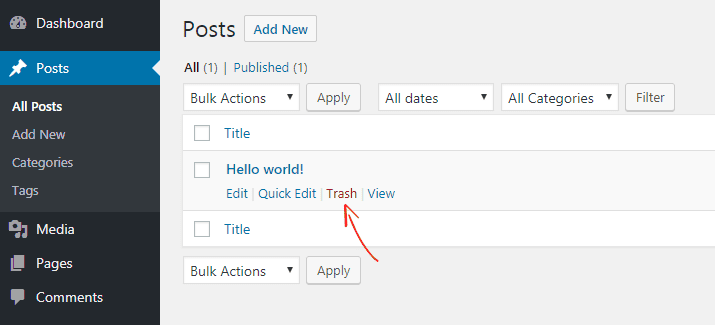
Similar way, you can delete sample pages by going Pages> All Pages.
However, it’s not finished yet. There are several things you need to do after installing WordPress.
Read, Most important things to do after WordPress Install
6. Set Up an SSL
By default, you already have an SSL certificate installed and your website can be accessed using both HTTP and HTTPS protocol.
However, if you open your site on the Google Chrome browser, you may see “your connection to this is not secure” message. This is because Google advises webmasters to run websites over the HTTPS only.
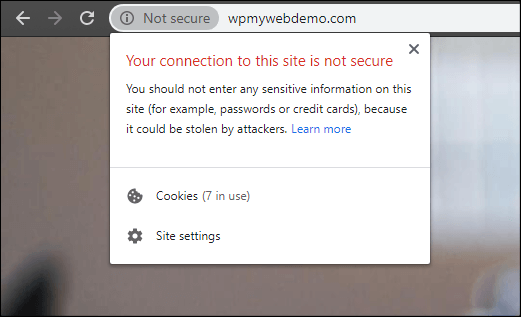
Forcing your site to redirect to HTTPS is very simple.
Step 1, For that, you need to log in to your hosting cPanel.
Step 2, Go to File Manager > public_html
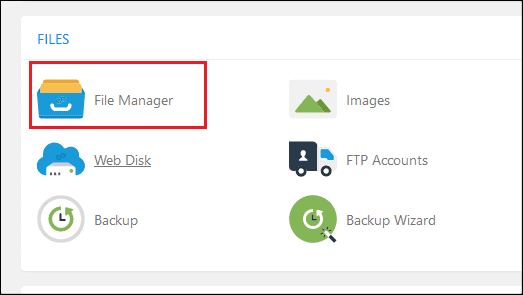
Step 3, Find and edit the .htaccess file
However, sometimes the .htaccess file is hidden by default. In this case, go to the settings and check the option that says “Show Hidden Files”.

Step 4, At the end of the .htaccess file, add the piece of code.
RewriteEngine On
RewriteCond %{HTTPS} off
RewriteRule ^(.*)$ https://%{HTTP_HOST}%{REQUEST_URI} [L,R=301]
Step 5, Save the file.
Step 6, Now, from your WordPress dashboard, go to Settings > General
Step 7, Change the HTTP protocol with HTTPS

Step 8, Click on the Save Changes at the bottom. Once done, you will be automatically logged out.
That’s it. Now your website will open only with HTTPS.
Read, 3 Different ways you can redirect HTTP to HTTPS in WordPress
7. Install WordPress Plugins
Next, you need to install some useful plugins for extending your site’s functionality.
To install a plugin, go to Plugins > Add New and there will see several plugins.
The problem is there are over 50,000 WordPress plugins available to use and it’s hard to choose. The good news is that I have listed the most common WordPress plugins below that you need to install.
Here are the top 5 plugins we recommend:
- RankMath (free) – WordPress SEO plugin
- Ninja Forms (free) – Contact form builder
- Akismet (free) – Protects your blog from spam
- WP Rocket (paid) – Best WordPress caching plugin
- Elementor (paid) – WordPress theme builder
8. Install a WordPress Theme
Once the plugin installation process is done, you need to install a theme.
By default, you already have 2 or 3 themes installed. But they look very simple and of course, you may want to change it.
To install a theme, go to Appearance > Themes > Add New and there you can find over 50,000 free themes. You can install any theme you want.
Read, 20 Best Free blogging themes for WordPress
9. Publish Your First Blog Post
Once you install WordPress on HostGator, it’s time to publish your first post.
To publish your post, go to Posts > Add New.
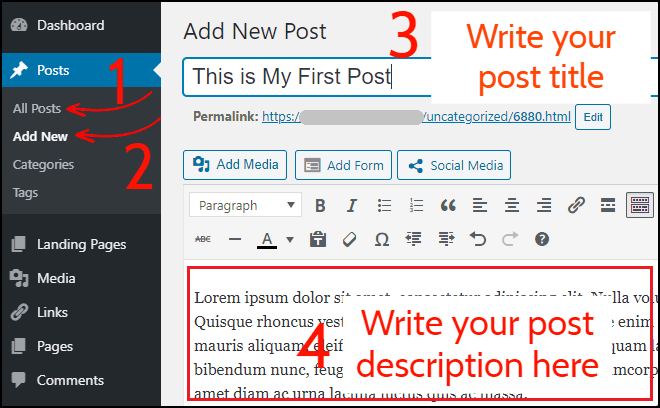
First, write your post title as well as post description.
Once done, select a category, add tags, and hit on the Publish button at the right top corner.
Now, go back to your website’s homepage and check your first post.
Congratulation! You have just started a blog with HostGator.
Conclusion
Stating a blog with HostGator is very straightforward. All you have to follow the instructions above I shared.
It will hardly take 10-15 minutes.
Once done, you need to install a few useful plugins and install a theme. Then, you can start blogging.
If you are having a problem or stuck on any step, do let me know in the comment section.
Related Content,
*This post may have affiliate links, which means I may receive a small fee if you choose to purchase through my links (at no extra cost to you). This helps us to keep WPMyWeb up and running and up-to-date. Thank you if you use our links, we really appreciate it! Learn more.

